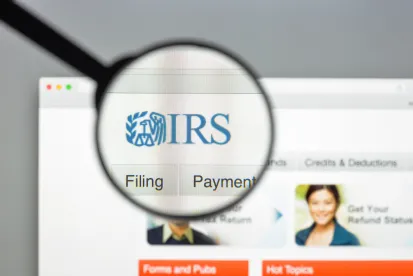A new Internal Revenue Service (IRS) Private Letter Ruling says that transferable development rights (TDRs) are of “like kind” with tangible real property and eligible for 1031 tax deferred treatment, even though these rights are intangible rights related to real property. The IRS issued Private Letter Ruling 202335002 (the PLR) regarding whether TDRs are of “like kind” within the meaning of Section 1031 of the Internal Revenue Code.
In the PLR, the taxpayer held real properties directly and through a series of single-member limited liability companies that are disregarded entities for U.S. federal income tax purposes. The taxpayer held one property (the Relinquished Property) through a disregarded single-member LLC and intended to sell the Relinquished Property and acquire TDRs as part of a like-kind exchange structured as a reverse exchange.
In general, a TDR is a method by which property owners who own development rights with respect to their land can sell and transfer the rights, which can be used on another parcel of real property. For example, TDRs allow landowners to sell development rights from their property to a developer who can then use these rights to increase development at another parcel. TDRs are thereby used to support new development and to lessen restrictions related to height, acreage, or square footage that a government authority may otherwise impose.
In the PLR, the TDRs originated from a memorandum of understanding between a city and government district. The district recorded a Covenant Restricting Use of Land and Notice of Development Restrictions with the county where the TDRs were located. The TDR memorandum of understanding was intended to establish a mechanism to accommodate the district’s acquisition of three properties on which to develop public facilities. The TDRs would be sold by the district and utilized by a third-party purchaser (i.e., the taxpayer) to allow for additional floor area than would otherwise be permitted by zoning regulations, essentially a density bonus. The city’s governing body approved the taxpayer’s pre-application for the purchase and use of the taxpayer-owned TDRs on existing property.
The taxpayer also represented that the TDRs are considered an interest in real property under state law and cited statutes and case law supporting the representation.
Accordingly, the taxpayer requested IRS guidance on (i) whether the TDRs are considered an interest in real property for Section 1031 purposes and (ii) whether the TDRs to be acquired in the like-kind exchange could be used with respect to other real property that the taxpayer already owned.
The IRS used the holding in Rev. Rul. 68-394, which involved the deferral of gain under Section 1033 (nonrecognition of certain amounts of gain upon receipt of money or other property as a result of an involuntary conversion), to support the theory that property related to property owned by the taxpayer could be treated as real property for Section 1031 purposes. In Rev. Rul. 68-394, the taxpayer received proceeds from the condemnation of unimproved real estate to repurchase the outstanding leasehold interest from a third party on land that the taxpayer already owned. The IRS stated it was immaterial that the taxpayer acquired the leasehold on property already owned; moreover, the purchase of the outstanding leasehold allowed the taxpayer to enjoy possession of land prior to the time he would have come into its possession under the terms of the original lease.



 />i
/>i

